Where comparisons end: How Hamas could be winning a war it should have lost
Interestingly, a comparison was drawn by Israel between the October 7 attack and the 26/11 Mumbai terror attack in the hope that there would be an unqualified understanding of Israel’s action. What this supposed comparison fails to recognize is that there is a significant difference.
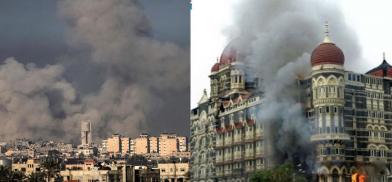
Almost seven months into the war in Gaza, Israel is increasingly facing isolation, especially from several of its friends. Ireland, Norway, and Spain have recently joined the list of countries that have recognized the State of Palestine, taking the tally to 145 countries. There is outrage after an Israeli strike killed 45 civilians recently in Rafah, including women and children. This is precisely what Hamas had hoped for when it launched its terror strike against Israel.
Wars are invariably fought on two fronts – on the battlefield and in the minds of people. Winning one does not necessarily ensure victory in the other. The events of October 7 and its aftermath are textbook examples of this.
Hamas knew that it lacked the military capability to counter Israel on the battlefield. Furthermore, at best the militant group Hezbollah’s support would be restricted to occasional missiles being fired into Israel from Lebanon and the supply of arms to the Hamas. Iran is too preoccupied with domestic compulsions to engage in a war with Israel that would certainly draw the US into the battlefield. What Hamas needed was to weaponize the television and social media, and project Israel as the ruthless perpetrator of indiscriminate violence. For this to happen, an attack on Israel needed to be mounted that was so savage in scale and intensity that it would humiliate and incense Tel Aviv to retaliate with devastating consequences.
Horror at Hamas assault
Recollect how horrific the October 7 terror strike was. Men and women, who were not combatants, even the elderly, the infirm, and children were mercilessly slaughtered. Women were gangraped before being killed. Many were shot in the back as they tried to flee. There are reports of beheadings. Over 1200 Israelis died that day and more than 250 were taken hostage. Israel slipped into a state of shock and sorrow. As Israeli citizens and families of the dead and those taken hostage began to demand answers from the government, grief turned into visible anger. Television stories carried images of grieving Israelis and accounts of how horrible the attacks were. Across the globe, there was horror at what had happened, along with near-total condemnation of Hamas. Hamas had laid the trap.
In the days following October 7, Hamas continued its rocket attacks on Israel, using its standard ploy of firing from densely populated residential areas and then escaping through the labyrinth of tunnels under Gaza City. An average of 1000 rockets were fired into Israel every day. Celebrations erupted in Lebanon and among the Hezbollah.
Meanwhile, Israel asked that the hostages be released and further, that many were non-Israelis. It also said that the attacks would not go unpunished. Hamas responded that this would need to be negotiated and that they, in turn, would want several prisoners in Israeli jails to be released in exchange. Meanwhile, Israel had drawn up battle plans for an all-out assault on Hamas in Gaza. For Prime Minister Benjamin Netanyahu, what happened on October 7 should never be allowed to happen again. He had fallen into the trap Hamas had laid for him.
The Hamas plan was as sinister as it was ruthless. First, they knew its great strength lay in its ability to operate from densely populated civilian areas. Any Israeli air strikes targeting Hamas hideouts would invariably result in massive civilian casualties and devastate the infrastructure causing immense hardship to the population. Continued rocket attacks on Israel would result in retaliatory strikes and, thereby, sustain the bombardment on civilian areas. The city would be destroyed. The deaths of innocent Palestinians in large numbers were central to Hamas’ plans—the more deaths, the better, especially of women, infants, and the elderly. Second, footage of what the Israeli bombings were doing, especially images of the large numbers of dead and the dying would be aired across the globe. Words like ‘genocide’ would be inserted into the narrative. Third, the distinction often made between Palestinians and Hamas would be blurred, alleging that Israel had always equated them and hence, justified action against all Palestinians. The narrative on the Gaza war would shift from destroying Hamas to exterminating Palestinians.
Questioning Tel Aviv's motives
Israel’s assault on Gaza has entered the seventh month with no immediate end in sight. According to health ministry data, over 34,000 Palestinians have been killed and around 74,000 injured. Prime Minister Netanyahu says around 13,00 of those killed were Hamas fighters. How he comes to this conclusion, is not clear but by his own admission, around 20,000 innocent Palestinians died over the past seven months.
It may be recalled that immediately after the October 7 attack, apart from Hezbollah and some hardline Islamists, who vehemently opposed Israel’s right to exist, global sentiment rallied around Israel and there was universal condemnation of Hamas. But with the continued bombardment of Gaza, Israel has quickly lost several of its friends and there is growing disenchantment with Tel Aviv’s policies.
Indeed, Hamas’ use of television and social media has been so successful that across the globe, from Australia to the US, common citizens have started to question Tel Aviv’s motives, and publicly condemned Israel. This significant shift in thinking is what Hamas had as its primary strategic objective and had meticulously planned for. Sadly, it appears to be succeeding.
Indian restraint post 26/11
India’s position has been clearly enunciated. It condemned the October 7 attack as being a terror attack and, at the same time, it unequivocally said that the fact remains that the Palestinians have been denied their homeland. Interestingly, a comparison was drawn by Israel between the October 7 attack and the 26/11 Mumbai terror attack in the hope that there would be an unqualified understanding of Israel’s action. What this supposed comparison fails to recognize is that there is a significant difference.
Former Indian Prime Minister Manmohan Singh was under increasing pressure to mount a retaliatory attack against Pakistan, especially after clear evidence of Pakistan’s involvement and the damning disclosures of the captured terrorist Ajmal Kasab after 26/11. This triggered global anxiety, as there were genuine concerns that it could trigger a nuclear confrontation. PM Singh heeded advice from friendly countries to avoid such a course of action. Instead of opting for the battlefield, he chose an alternative route of putting together a detailed dossier of Pakistan’s complicity and deep involvement in the terror attack. The rest is history. Globally, Pakistan was isolated and considered a pariah state. In the words of Sun Tzu, the ancient Chinese military strategist, the greatest victories are not fought on the battlefield. One should never underestimate the persuasive power or quiet diplomacy.
You don’t need to be a friend of Israel to condemn the terror attack that Hamas launched. At the same time, you don’t need to be a Hamas sympathizer to lament the enormous death toll, including tens of thousands of infants and innocent civilians. Even within Israel, protests have erupted questioning Tel Aviv’s actions.
There is another and even more macabre narrative that is being spoken of. It is being said that Israel had all along planned on taking over Gaza and solving the Hamas problem once and for all. In other words, Mossad and the Israeli leadership knew about the imminent October 7 attack in advance, and that it shut down the Iron Dome to allow the attack to take place. This then gave them a legitimate reason to launch the massive attack on Gaza. The deaths of the Israelis were, consequently, a sacrifice for a greater cause.
Whichever the narrative, it suggests that human lives don’t matter. They are pawns that can and would be sacrificed when considered necessary.
(The author is a former Indian diplomat. Views are personal.)




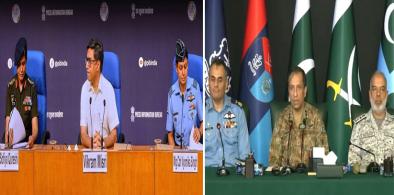
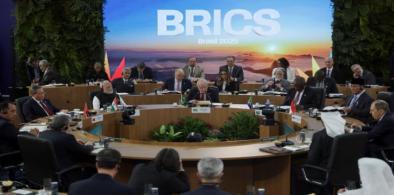
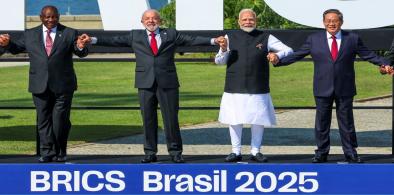




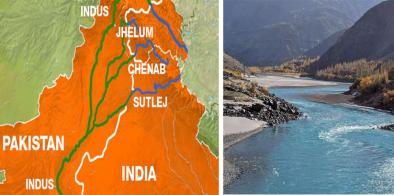








Post a Comment